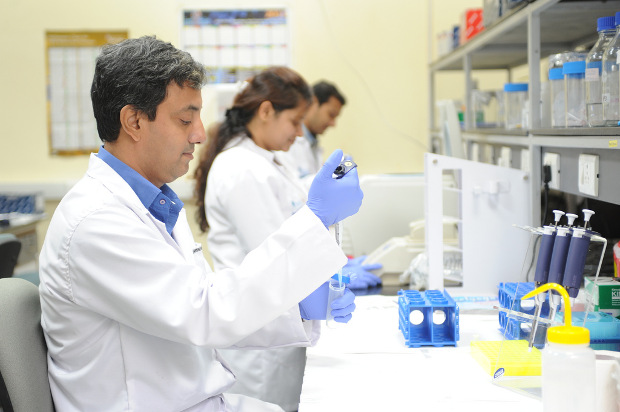India Lags Emerging World in Research, Imperils Innovation

As it attempts to drive growth and innovation, India—as a recent imbroglio over stipends reveals—lags the developed and emerging world in a key area: research and development.
 Source: UNESCO
Source: UNESCO
An IndiaSpend analysis reveals that India has 366 research and development (R&D) personnel per million population, compared with 1,366 in Brazil, 2,358 in China and 6995 in Germany, according to the United Nations Educational, Scientific and Cultural Organisation (UNESCO).
At 10,073, Iceland has the highest number of R&D personnel per million population.
 Source: Batelle
Source: Batelle
While the United States spends around 2.8% of GDP on R&D, China spends 2% and Russia 1.5%, according to a report by Batelle, a non-profit research and development organisation.
On an average, an Indian researcher is paid around Rs 2.5 lakh/year, which is 22% lower than the average minimum salary range of Rs 3.2-5 lakh/year paid by well-known IT and engineering firms to fresh graduates.
Stipends raised, but show them the money
For more than a year, research scholars across India have been demanding increased stipends.
Scholars at the Indian Institute of Science, Bangalore, wore armbands to protest the issue during Prime Minister Narendra Modi’s recent visit to the institute.
The Department of Science & Technology (DST) approved an increase in stipends in October 2014. These range from 55% for junior research fellows, from Rs 16,000 to Rs 25,000, and 66% for research associates, from Rs 24,000 to Rs 40,000.
The University Grants Commission (UGC) also announced a 55% hike in 15 fellowship schemes. But the scholars still haven’t received the hiked stipends.
Ignoring R&D in this manner could imperil India’s future growth.
Without research, India struggles with innovation
 Source: UNESCO
Source: UNESCO
Low spending on R&D is the major reason India lags similar economies in innovation and scientific development. In 2012, Manmohan Singh, then Prime Minister, had expressed concerns that expenditure on research and development in India has been “too low and stagnant”.
India had 0.44 million R&D personnel, as compared to China’s 3.2 million, Japan’s 0.86 million and Russia’s 0.83 million, according to data last available.
 Source: World Bank
Source: World Bank
India's niggardly contribution to patent filing
In terms of filing patents, India lags major countries, and its contribution to global patent filings was 1.8% in 2012.
The number of patents filed by foreigners in India largely exceeds patents filed by residents between 2005-2012, a trend also observed in Brazil and South Africa, according to data available with the World Bank.
 Source: UNESCO
Source: UNESCO
The number of female R&D personnel in India is low: 15% are female, compared to 29% in France, 41.4% in South Africa and 27.3% in Germany. Bulgaria, where women comprise 53.3% of personnel, tops the list.
(Saha is Data Editor at The Political Indian.)
Image Credit: International AIDS Vaccine Initiative/Gagandeep
“Liked this story? Indiaspend.com is a non-profit, and we depend on readers like you to drive our public-interest journalism efforts. Donate Rs 500; Rs 1,000, Rs 2,000.”


